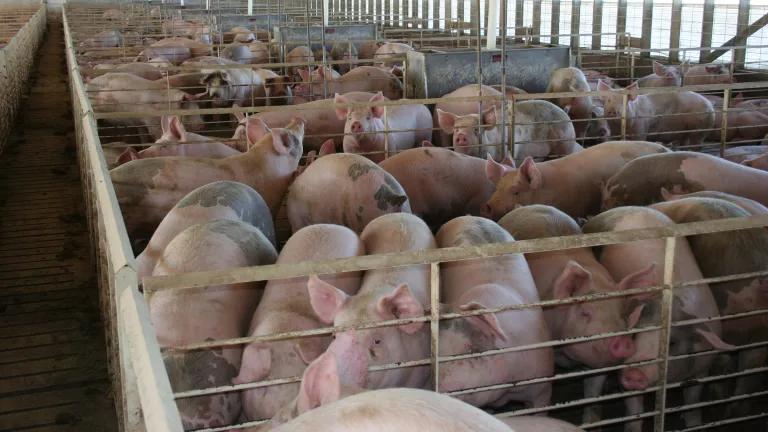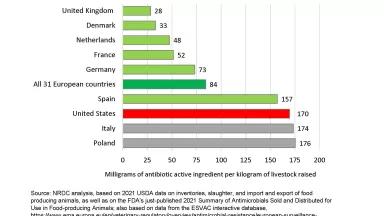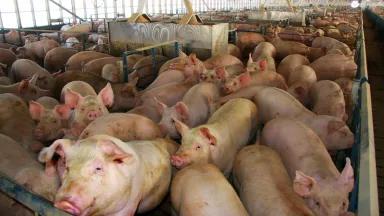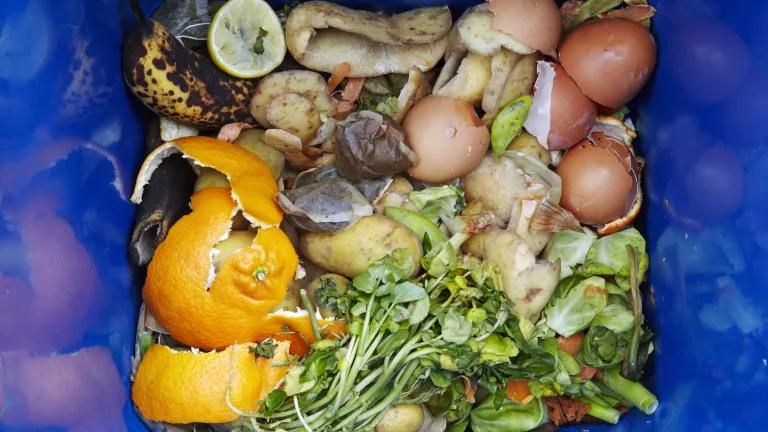Antibiotic Use Remains Far Too Intensive in U.S. Livestock
By contrast, falling rates of medical use suggest more effective stewardship.

Pigs in a swine finishing barn on an Iowa farm
Darcy Maulsby/iStock
Every 15 minutes, another person in the United States dies from a drug-resistant infection. It’s estimated that, by 2050, drug-resistant germs will kill up to 10 million people a year worldwide unless policymakers enact more effective policies. Continued overuse of antibiotics speeds up the growth and spread of drug-resistant bacteria that are responsible for these deaths.
Since 2017, NRDC, in cooperation with One Health Trust (formerly the Center for Disease Dynamics, Economics & Policy), has worked to fill in data gaps, enabling the comparison on an apples-to-apples basis of the levels of use of medically important antibiotics in both human medicine and in food-producing animals, which we collectively refer to as “livestock.” Our latest analysis incorporates data from 2020, the most recent year for which both human and animal data are available; the work helps keep the U.S. Food & Drug Administration (FDA)—which regulates animal antibiotics—more accountable. Federal law requires the FDA to make sure that farm antibiotic use is safe not only for animals but for people; that means the FDA should be tracking where those antibiotics are used routinely or excessively (aka “overuse”), since overuse fuels the already grave public health crisis posed by antibiotic resistance. An accompanying NRDC blog shows that the FDA could—but does not—do this tracking.
Table 1 of our analysis focuses on the years after 2016, which was the last year when the FDA still allowed these antibiotics to be purchased and given to flocks or herds of healthy livestock solely to promote more rapid growth. As of 2020, nearly twice as many medically important antibiotics were sold for livestock use as for human medicine; total livestock sales were about 8 percent higher in 2020 as in 2017. Nearly as many of these precious medicines were sold for pigs (2.45 million kilos) as for human medicine (2.67 million kilos); the same is true for the cattle industry, unfortunately. Pig antibiotic sales—and presumably, use—rose more than 21 percent from 2017 to 2020.
Table 1: Medically Important Antibiotics Sold for U.S. Livestock* Use and for Human Medicine, 2017 to 2020 (in millions of kilos of antibiotic active ingredient)
For the first time, we also compared the intensity of use of medically important drugs by livestock producers and in human medicine on a weight-adjusted basis (milligram per kilogram, or mg/kg). It is a vital comparison because the higher the level at which bacteria living in people or animals are exposed to antibiotics, the more likely it is that evolution will select for bacteria carrying resistance to these antibiotics to multiply and spread. Results are summarized in Table 2.
One Health Trust supplied estimates for the biomass-adjusted (mg/kg) “intensity” of antibiotic use in human medicine from 2017 to 2020 based on information it obtained from IQVIA, a private company that directly collects outpatient antibiotic prescription information across the United States.
One Health Trust’s Alisa Hamilton reports:
"We used IQVIA Midas data from 2015 to construct a hospital-to-retail ratio of prescriptions (in kilograms) for each antibiotic class. To estimate kilograms of retail prescriptions for years 2017–2020, we used IQVIA Xponent data, which provide information on product name, quantity, form, strength, gender, and age for outpatient prescriptions. We calculated kilograms using quantity, form, and strength. The 2015 hospital-to-retail ratios were then applied to each year’s retail prescriptions to estimate hospital prescriptions. Retail and hospital prescriptions were summed to estimate total prescriptions in kilograms for each year of 2017–2020. To correct for population biomass, we divided kilograms of prescriptions by the weight of the population for each year. Biomass (kg) was calculated using age and gender-stratified population data from the Centers for Disease Control and Prevention (CDC). Mean weights in kilograms for each gender and age group were estimated from the CDC weight-for-age growth tables."
NRDC calculated the mg/kg intensity of animal antibiotic use overall and by individual species based on the FDA’s animal antibiotic sales data, which is reported annually; estimates of the total biomass of animals under production in 2020 were determined using public U.S. Department of Agriculture (USDA) data and the methods already described in detail in a recent NRDC issue brief.
Table 2: Comparing the Intensity of Medically Important Antibiotic Use in U.S. Livestock and in Human Medicine
U.S. production of both cattle and pigs is enormous. That helps to explain why the volume of medically important antibiotics sold to those sectors is so enormous, but it is not the full story. Those industries are also using these precious medicines very intensively—that is, at a very high weight-adjusted (mg/kg) rate of use. Table 2 shows the rates of use in cattle production; pig production, especially, is far higher than our estimated rates of use for sick human patients.
Table 2 also shows the stewardship gap is widening between antibiotic use in human medicine and livestock production. In other words, physicians and other medical practitioners prescribed medically important antibiotics less intensively in 2020 compared to 2017. By contrast, the U.S. livestock sector uses these same antibiotics more intensively today than in 2017—12 percent more intensively in the case of pig production, specifically. By 2020, the use of these drugs in pig production was almost two and half times more intense than it was in human medicine.
Antibiotic stewardship in U.S. animal agriculture is worsening, not improving. This stewardship decline only highlights that the FDA is not doing its part to address the public health threat we all face from the spread of drug-resistant infections.









